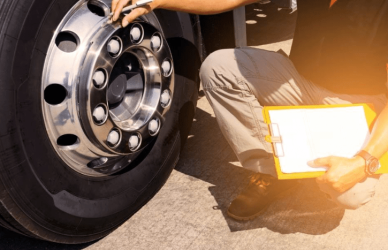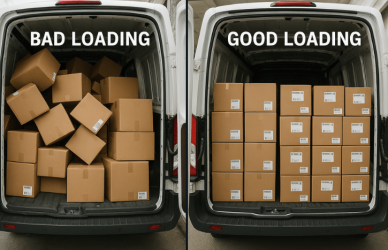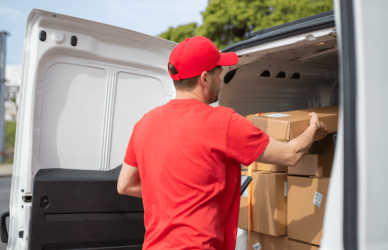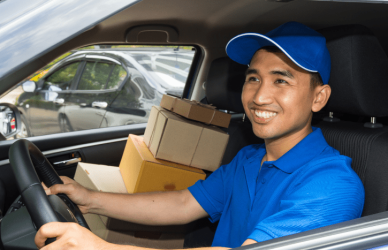Autonomous trucking technology was the hot topic at this year’s Technology & Maintenance Council (TMC) annual meeting in Orlando, Florida. During a panel discussion on insurance and autonomous trucks, experts delved into topics such as liability for crashes involving self-driving vehicles to how these new technologies could affect insurers’ assessment of fleet risk. While the panel was informative, it seems there are more questions than answers concerning adoption of automated transport.
Earl Adams, the freshly appointed Deputy Director of the Federal Motor Carrier Safety Administration opened a conversation on autonomous trucks with an update. He recognized that uncertainty and risk come hand in hand as this burgeoning industry embarks into unknowns such as conflicting state laws, public acceptance/perception, and who will be responsible when something goes wrong.
“I don’t have answers, but I do have questions, things I know we have to ask ourselves,” Adams said. “Some would have it be a strict product liability system. Others believe it should be no different than standard automotive insurance that we currently have.”
Had added that FMCSA is investing in research to answer industry questions surrounding autonomous vehicles. The hope is that the findings of this research can help guild the industry and regulators.
Right now, the number of unanswered questions concerning this technology is making it tough for the insurance industry to figure out how they’re going to write policies for autonomous trucks.
Mike Dorfman, co-founder and COO of Koffie Financial advised that as has been seen with past technologies, larger fleets are leading the charge in adoption while smaller fleets follow soon after. He highlighted how being informed on pertinent questions is vital to ensure everyone can benefit from the knowledge gained from early adopters without passing a burden on to those taking the plunge later.
“If you don’t do an insurance product properly for the entire industry,” he said, “the small fleets and owner-operators will really see the brunt of any increases.”
How is the Risk for Autonomous Vehicle Determined?
As the autonomous truck industry revs up, traditional insurance rates for this new technology are based on a scarcity of historic data. Andy Roth, director of insurance at Roth Insurance has found that successful partnerships between underwriters and AV developers require intuitive analysis from vast amounts of real-time generated data. Insurers have been finding a number of creative solutions to this data, but the fact remains that the data is still limited.
“Collecting data has advanced in autonomous-vehicle tests in the sense of, we have a much better idea of what we want to know from a risk perspective and we’re starting to lay the groundwork for collecting and modeling that data.”
Who’s Liable in an Autonomous Truck Crash?
Autonomous trucks are raising an important question: who is responsible in the case of a crash? While traditional human-driven trucking companies have long been held liable for any accidents, questions remain when it comes to autonomous vehicles – Is it due to product malfunction or driver error that causes these crashes? It’s uncertain how this emerging technology will ultimately be regulated.
“I think OEMs will need to start buying some product liability of their own,” Dorfman said. This, however, does not fit with the current model of product liability, according to Dorman himself who went on to add that they need clear guidance on exactly where product liability begins and ends and where auto liability begins and ends. “Right now, we don’t have a framework for that.”
Clayton Cavell, president of Paul Hanson Partners and advocate for autonomous truck safety recently suggested that regulations might be necessary to mandate insurance requirements similar to those imposed upon motor carriers.
Dorfman then voiced a legitimate concern; if fleets who operate with self-driving trucks become involved in accidents, he feared plaintiffs’ attorneys would inevitably target the producers over motor carriers, simply because the producer is generally bigger fish to pursue.
“We could very easily reduce the number of crashes but not actually reduce the costs from an insurance perspective.” Added Cavell.
Insurance and Maintenance of Autonomous Vehicles
According to Dorfman insurers currently evaluate things such as hiring policies, driver training, and safety practices. “The natural extension of that will be safety and maintenance policies around AVs. Insurers are going to have to look deeply into that in order to get comfortable with risk.”
TMC’s Jack Legler said he believes maintenance will become even more important when dealing with insurance questions.
“We [in maintenance] will be responsible for making sure the AI is up and running like the rest of the vehicle,” Legler said. And that may mean fleets will have to adjust their maintenance practices.
Autonomous vehicles could suffer from decreased performance due to misalignment of their sensors, which are also highly important in the operation of advanced driver assistance systems, according to Roth.
“It’s something regulators will want to pay close attention to and understand. We’re not there yet. There’s not a practice you can look at and say this is sort of a benchmark.”
Legler noted that one of TMC’s latest Recommended Practices is about ADAS and maintenance practices such as checking sensor alignment when replacing a windshield or after an accident. “These things will obviously have the same effect on AVs but at a higher level.”
Taking it a step further, Legler suggested the maintenance department will effectively take over a number of roles that have historically fallen under safety, because the driver is now a piece of technology that must be properly maintained as opposed to a driver that needs to be hired and trained.
Expedited Claims
The speakers noted that autonomous vehicles have the potential to dramatically reduce processing time when it comes to resolving claims and lawsuits, as crash notifications along with related data – including 360-degree camera coverage in many cases – can be obtained almost instantaneously due to its connected nature.
“So, I think it’s going to be more efficient,” Roth said. “It has the ability to be handled much more quickly than it might be today, with faster notification and greater certainty about what happened.”
Source: truckinginfo








